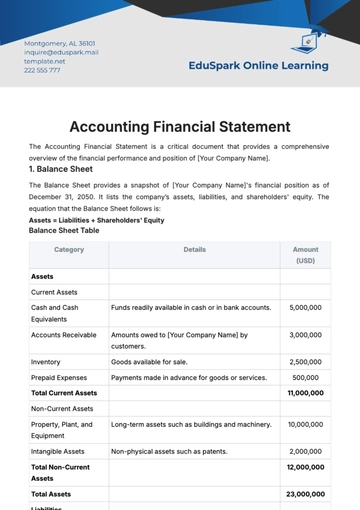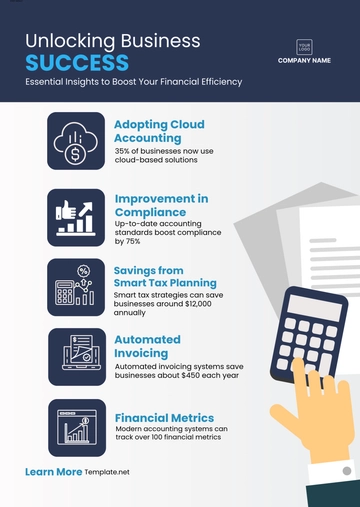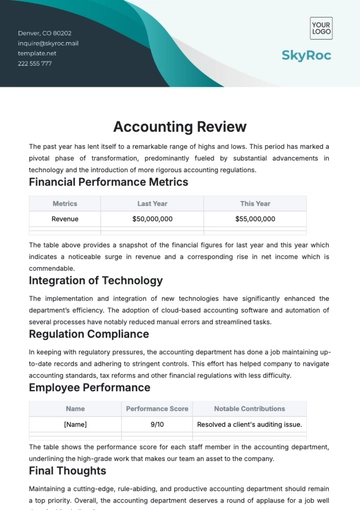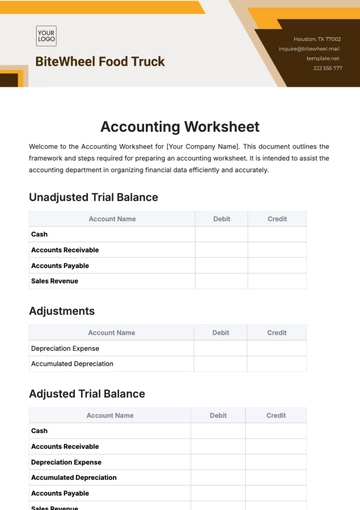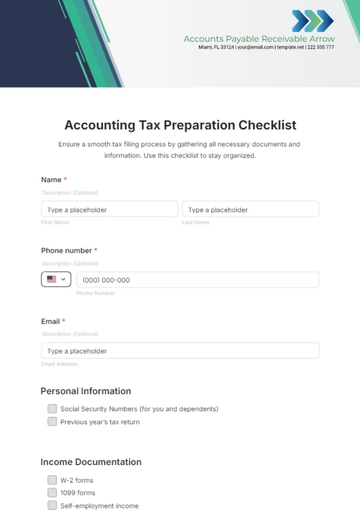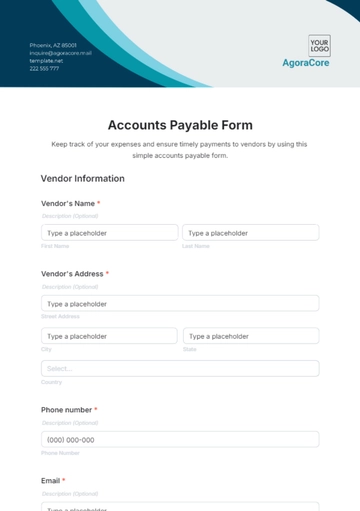Free Accounting Asset Sustainability Study
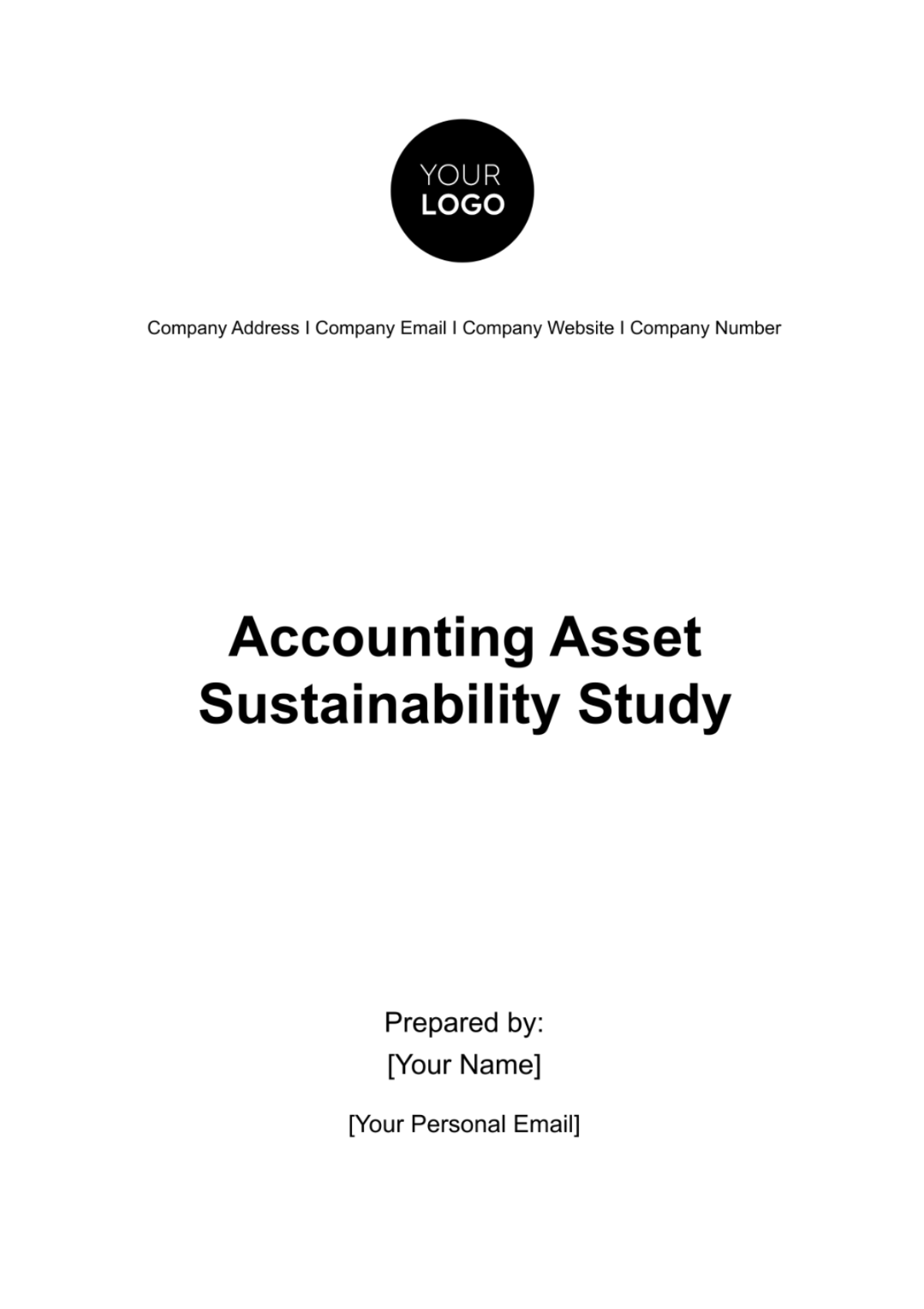
Introduction
This study aims to explore Accounting Asset Sustainability, a critical component of long-term financial viability. Accounting Asset Sustainability essentially denotes [Your Company Name]'s assets' capability to sustain its value and functionality over time, while being utilized optimally, offering profitability and promoting environmental sustainability.
This investigation adopts a comprehensive approach, aiming to enrich the understanding of sustainable asset management's role and significance. By dissecting various dimensions of accounting asset sustainability, the study aspires to unveil insights that could significantly contribute to the discourse on financial resilience and eco-friendly business practices.
Objectives of the Study
The overarching goal of this study is to elucidate the critical importance of accounting asset sustainability, striving to integrate this knowledge into [Your Company Name]'s core operations and corporate ethos. By doing so, the intention is to not only fortify [Your Company Name]’s distinct identity but also to underscore its commitment to fostering financial health and environmental stewardship. To this end, the study is designed to achieve several key objectives:
To conduct a thorough exploration of the principles and practices underpinning accounting asset sustainability, highlighting its relevance in contemporary business industry standards.
To assess the impact of sustainable asset management on organizational performance, including its role in enhancing profitability and supporting long-term strategic goals.
To identify best practices and innovative strategies for the effective implementation of accounting asset sustainability, tailored to align with [Your Company Name]'s operational dynamics and sustainability aspirations.
To evaluate the interplay between accounting asset sustainability and environmental sustainability, aiming to contribute to the development of eco-friendly business models that can serve as benchmarks in the industry.
By addressing these objectives, the study endeavors to contribute significantly to [Your Company Name]’s strategic positioning as a leader in sustainable asset management, thereby reinforcing its dedication to financial robustness and environmental responsibility.
Research Methodology
The methodology underpinning this study is meticulously designed to ensure a comprehensive and robust examination of Accounting Asset Sustainability. By adopting a mixed-methods approach, the research integrates both qualitative and quantitative techniques, leveraging the strengths of each to garner a holistic understanding of the subject matter. This multifaceted strategy is essential for capturing the nuanced complexities and multifarious dimensions of accounting asset sustainability, thereby enabling a more profound and informed analysis.
Quantitative Research Methods
The quantitative aspect of this research will involve the systematic collection and analysis of numerical data. This will include, but not be limited to, financial performance indicators, asset utilization ratios, and sustainability metrics relevant to [Your Company Name] and comparable entities within the industry. Statistical tools and econometric models will be employed to quantify the impact of sustainable asset management practices on organizational performance and environmental outcomes. Such an approach will facilitate objective measurement and benchmarking, providing a solid empirical foundation for the study's conclusions.
Qualitative Research Methods
Complementing the quantitative analysis, qualitative methods will be utilized to gain deeper insights into the processes, experiences, and perceptions associated with accounting asset sustainability. This will encompass the analysis of primary data gathered through interviews, focus groups, and surveys with key stakeholders, including management personnel, employees, and industry experts. Additionally, secondary data will be derived from a thorough review of existing literature, corporate sustainability reports, and public disclosures. The qualitative investigation will also involve detailed case studies of specific asset management initiatives within [Your Company Name], offering context-rich examples of challenges faced and strategies implemented.
Case Studies Examination
A pivotal component of the research methodology is the in-depth examination of case studies from [Your Company Name]. These case studies will be carefully selected to represent a range of scenarios where sustainable asset management practices have been applied. Each case will be analyzed to uncover the decision-making processes, implementation strategies, outcomes, and lessons learned. This approach will not only provide concrete illustrations of theoretical concepts but will also highlight practical implications and real-world applicability.
Integration of Research Methods
The integration of quantitative and qualitative methods, alongside the examination of case studies, is designed to ensure a balanced and comprehensive exploration of accounting asset sustainability. By triangulating data from multiple sources and methodologies, the study aims to mitigate biases, enhance the reliability of findings, and draw well-rounded conclusions. Ultimately, this research methodology will provide [Your Company Name] with actionable insights and evidence-based recommendations to guide its pursuit of sustainable asset management and reinforce its commitment to long-term financial viability and environmental sustainability.
Analysis of Data
The data analysis segment of this study is meticulously designed to dissect the intricate interplay between an organization's operational efficiency, profitability, and the sustainability of its assets. By employing advanced statistical methodologies alongside foundational accountancy principles, this phase aims to unearth empirical insights into how sustainable asset management impacts financial performance and environmental stewardship. The approach is two-pronged, incorporating both the quantitative precision of statistical analysis and the qualitative depth of accounting interpretation to paint a comprehensive picture of asset sustainability's role within [Your Company Name].
Statistical Methodologies
The quantitative analysis will leverage sophisticated statistical tools to scrutinize the data collected. Techniques such as regression analysis, time-series analysis, and hypothesis testing will be pivotal in identifying patterns, trends, and correlations within the data. This will facilitate a rigorous examination of the relationship between asset sustainability practices and their effects on operational efficiency and profitability. The statistical analysis will be conducted using software platforms renowned for their analytical capabilities, ensuring accuracy and reliability in the findings.
Accountancy Principles
Concurrently, accountancy principles will guide the qualitative analysis, focusing on the interpretation of financial statements, asset valuation methods, and sustainability reporting standards. This aspect of the analysis will delve into the accounting treatment of sustainable assets, examining how these practices align with broader financial and environmental objectives. By integrating accounting insights with statistical findings, the analysis will offer a nuanced understanding of sustainable asset management's financial implications.
Table of Key Metrics
To illustrate the findings, the following table outlines key metrics that will be analyzed, providing a snapshot of the data underpinning this study:
Metric | Description | Method of Analysis |
|---|---|---|
Asset Utilization Ratio | Measures how efficiently an organization uses its assets to generate revenue. | Quantitative: Statistical Analysis |
This table represents a structured approach to analyzing the multifaceted impact of sustainable asset management, ensuring that each metric is examined through the appropriate analytical lens. Through this detailed investigation, the study aims to provide [Your Company Name] with actionable insights, highlighting the tangible benefits of integrating sustainability into asset management practices. The combination of statistical rigor and accounting acumen in this analysis is crucial for drawing well-founded conclusions that can inform strategic decisions and operational adjustments aimed at enhancing both financial performance and environmental sustainability.
Quantitative Appraisal of Asset Sustainability
The quantitative appraisal of asset sustainability forms an essential pillar of this research, focusing on the analysis of key financial indicators to assess the long-term viability and sustainability of assets. This appraisal employs a data-driven approach, harnessing a suite of financial metrics that collectively provide a comprehensive view of how sustainability practices are integrated into asset management and how these practices impact the financial performance and resilience of the organization.
Key Financial Indicators
The evaluation hinges on several pivotal financial indicators that together paint a detailed picture of asset sustainability. These indicators include:
Return on Investment (ROI) for Sustainability Initiatives: This measures the financial returns generated from investments in sustainable practices and technologies, offering insights into the profitability and efficiency of these investments.
Depreciation and Amortization Rates: By examining these rates, the analysis considers the gradual consumption of asset value over time, offering a lens through which to view the longevity and sustainability of asset investments.
Capital Expenditure on Sustainable Assets: This indicator highlights the organization's commitment to acquiring or upgrading assets for the sake of long-term sustainability, reflecting strategic investment decisions.
Operating Costs Related to Sustainable Assets: Analyzing these costs sheds light on the operational efficiency and cost savings achieved through sustainable asset management practices.
Net Asset Value: Adjusted for sustainable asset valuation, NAV provides a snapshot of the organization's financial health, considering the impact of sustainable practices on overall asset value.
Energy Cost Savings: This metric quantifies the financial benefits derived from implementing energy-efficient solutions, illustrating the direct cost savings and efficiency gains.
Analysis Approach
The approach to this quantitative appraisal is methodical, ensuring each financial indicator is scrutinized for its implications on asset sustainability. The analysis will:
Assess ROI for Sustainability Initiatives: Determining the profitability of sustainable investments allows for a clear understanding of their financial viability and contribution to the organization's overall financial performance.
Evaluate Depreciation and Amortization Rates: This offers insights into the expected lifespan and value retention of sustainable assets, crucial for long-term financial planning.
Analyze Capital Expenditure on Sustainable Assets: Understanding the volume and impact of investments in sustainable assets informs on the organization's strategic priorities and its commitment to sustainability.
Examine Operating Costs and Energy Savings: This provides a dual perspective on the cost-effectiveness and efficiency improvements derived from sustainable asset management practices.
Calculate Net Asset Value Adjustments for Sustainability: Reflecting on how sustainability practices affect the net worth of the organization offers a broader view of the financial implications of sustainable asset management.
This comprehensive quantitative appraisal aims to establish a clear link between sustainable asset management practices and their financial outcomes. By meticulously analyzing these key financial indicators, the study seeks to underscore the economic benefits and strategic importance of integrating sustainability into asset management. The findings from this appraisal are expected to reinforce the case for sustainable asset practices, highlighting their role in enhancing operational efficiency, reducing costs, and contributing to the financial stability and resilience of [Your Company Name].
Case Study Analysis
The Case Study Analysis segment of this research is designed to offer an in-depth examination of how [Your Company Name] has effectively integrated asset sustainability into its financial strategies and the subsequent benefits realized from such integration. Through detailed case studies, this analysis aims to illuminate the practical applications of sustainable asset management within the organization, showcasing real-world examples of its impact on financial performance, operational efficiency, and environmental stewardship. Each case study is selected for its relevance and potential to provide insights into the successful implementation and outcomes of asset sustainability initiatives.
Selection Criteria for Case Studies
The case studies are meticulously chosen based on several criteria:
Relevance to Asset Sustainability: Priority is given to examples that clearly demonstrate the application of sustainability principles in asset management.
Diversity of Applications: The selection encompasses a range of scenarios to illustrate the broad applicability of sustainable practices across different asset types and business areas.
Quantifiable Outcomes: Preference is for case studies with clear, measurable results that highlight the financial and operational benefits of sustainability initiatives.
Innovative Practices: Cases that showcase innovative approaches to sustainability in asset management are included to provide inspiration and best practices for the industry.
Overview of Case Studies
The following table provides an overview of the case studies selected for analysis, outlining the context, sustainable practices implemented, and key outcomes of each case:
Case Study | Sustainable Practices Implemented | Key Outcomes |
|---|---|---|
Green Retrofitting Program | Installation of energy-efficient lighting and HVAC systems. | Reduction in energy consumption by 25%, leading to significant cost savings. |
Analysis Approach for Case Studies
The analysis of each case study involves a detailed examination of:
Context and Implementation: Understanding the background, objectives, and execution of the sustainability initiatives, highlighting how they were integrated into the organization's asset management strategy.
Sustainable Practices: Describing the specific sustainable practices adopted, including any innovative technologies or methodologies used.
Quantitative and Qualitative Outcomes: Assessing the results of the initiatives in terms of financial performance, operational efficiency, and environmental impact. This includes quantifiable savings, efficiency gains, and improvements in sustainability metrics.
Lessons Learned: Drawing insights and lessons from each case, focusing on challenges overcome, success factors, and best practices that can inform future sustainability efforts.
By conducting this comprehensive case study analysis, the research aims to provide a nuanced understanding of the tangible benefits and strategic advantages that sustainable asset management brings to [Your Company Name]. The goal is to demonstrate, through practical examples, how embedding sustainability into asset management can lead to significant improvements in financial performance, operational efficiency, and environmental stewardship, thereby offering valuable lessons and actionable insights for [Your Company Name] and the broader industry.
Recommendations
This section synthesizes the findings from the quantitative appraisal, case study analysis, and the overarching research on Accounting Asset Sustainability. This final segment of the study aims to distill the insights gained into actionable recommendations for [Your Company Name], highlighting the strategic value of integrating sustainable asset management practices into the organization's financial and operational framework. Based on the study's findings, the following recommendations are made to [Your Company Name] for enhancing its asset sustainability practices:
Expand Investment in Sustainable Assets: Allocate greater resources to the acquisition and development of sustainable assets, leveraging the financial and operational benefits demonstrated in the quantitative appraisal.
Enhance Sustainability Reporting: Improve transparency and detail in sustainability reporting to better communicate efforts and outcomes to stakeholders, drawing on best practices identified in the case studies.
Foster Innovation in Asset Management: Encourage innovation in sustainable asset management practices, exploring new technologies and methodologies that can further improve efficiency and sustainability outcomes.
Strengthen Stakeholder Engagement: Develop more robust mechanisms for stakeholder engagement, ensuring that the perspectives and priorities of all stakeholders are considered in sustainability initiatives.
Implement Continuous Learning and Improvement: Establish processes for continuous learning and improvement in sustainable asset management, using insights from this study and ongoing monitoring of practices to refine and enhance sustainability efforts.
Leverage Data Analytics for Sustainability Insights: Invest in advanced data analytics tools and platforms to gain deeper insights into the performance and sustainability of assets. Utilizing big data and predictive analytics can help [Your Company Name] identify trends, forecast future sustainability impacts, and make data-driven decisions that enhance asset utilization and sustainability outcomes.
Promote Cross-Departmental Collaboration for Sustainability Initiatives: Encourage a culture of collaboration between different departments and teams within [Your Company Name] to ensure that sustainability is integrated across all facets of asset management. By fostering cross-functional teams dedicated to sustainability projects, the organization can leverage diverse expertise and perspectives, leading to more innovative solutions and comprehensive implementation of sustainable practices.
Develop and Implement a Sustainability Training Program: Create a comprehensive training program focused on sustainability principles, practices, and benefits for all employees, from executive leadership to operational staff. This program should cover the importance of sustainable asset management, the specific sustainability goals of [Your Company Name], and the role each employee plays in achieving these goals. By educating and empowering employees with the knowledge and tools needed to contribute to sustainability efforts, [Your Company Name] can foster a culture of sustainability that permeates every level of the organization.
By adopting these recommendations, [Your Company Name] can further solidify its commitment to sustainable asset management, ensuring long-term financial stability and contributing positively to environmental sustainability. This study provides a foundation for informed decision-making, offering a roadmap for integrating sustainability into the core of the organization's asset management strategy.
Conclusion
The study will conclude with key findings and actionable insights that can guide organizations [Your Company Name] to adopt practices that ensure the sustainability of their accounting assets. By incorporating the principles of accounting asset sustainability into their operations, organizations can work towards their financial and sustainability goals simultaneously.
- 100% Customizable, free editor
- Access 1 Million+ Templates, photo’s & graphics
- Download or share as a template
- Click and replace photos, graphics, text, backgrounds
- Resize, crop, AI write & more
- Access advanced editor
Maximize the longevity of your assets with Template.net's Accounting Asset Sustainability Study Template. This template is designed to be fully editable and customizable, providing the ultimate flexibility for conducting thorough sustainability analyses. Accessible for modification in our Ai Editor Tool, it enables finance and accounting professionals to tailor their sustainability studies to their specific needs.











